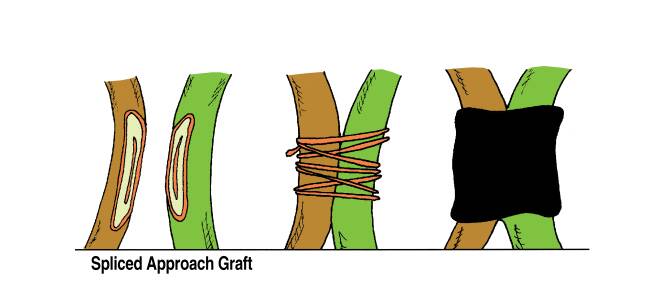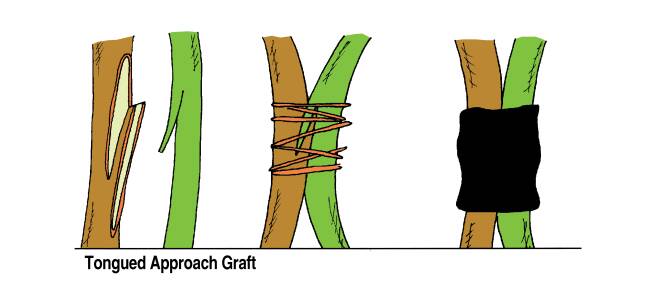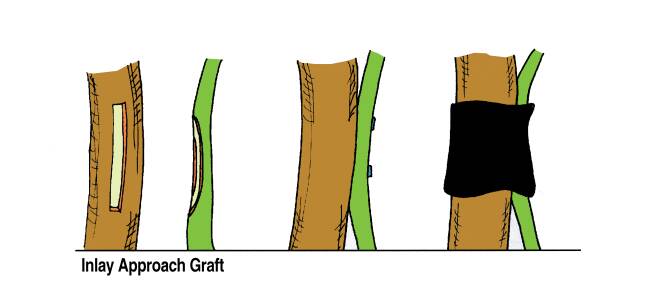Approach grafting is unique because both the rootstock and scion remain atached to their root systems during the grafting process. The scion is usually in a container, which is brought to the rootstock.
This graft is done while both partners are actively growing. It is a graft used when the scion is unique and the propagator does not want to remove it from the stock plant.
It is also used when standard grafts have not been successful.

After the graft union forms cut the unwanted rootstock and scion away.

Spliced approach graft

Tongued approach graft

Inlay approach graft



